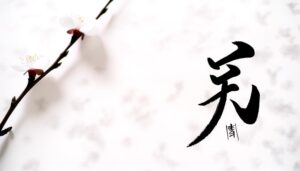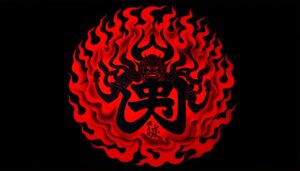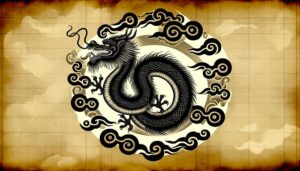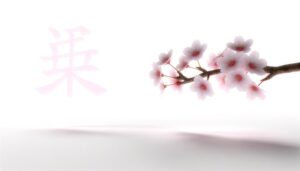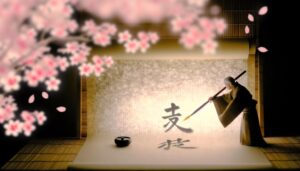Kanji Symbol for Beautiful in Japanese?
The Japanese symbol for beautiful is represented by the kanji 美 (bi). This character, deeply rooted in ancient Chinese script, embodies aesthetics with its intricate composition.
The kanji features a top radical symbolizing 'sheep,' connoting grace, and a bottom radical meaning 'great,' enhancing its grandeur. This symbol's cultural significance extends across various art forms, from calligraphy to textiles, reflecting beauty's essence in both traditional and modern contexts.
Pronounced 'bi,' it maintains a prominent role in Japanese literature, branding, and daily language. Discover how this symbol transcends physical attractiveness to encapsulate broader aesthetic ideals and values.
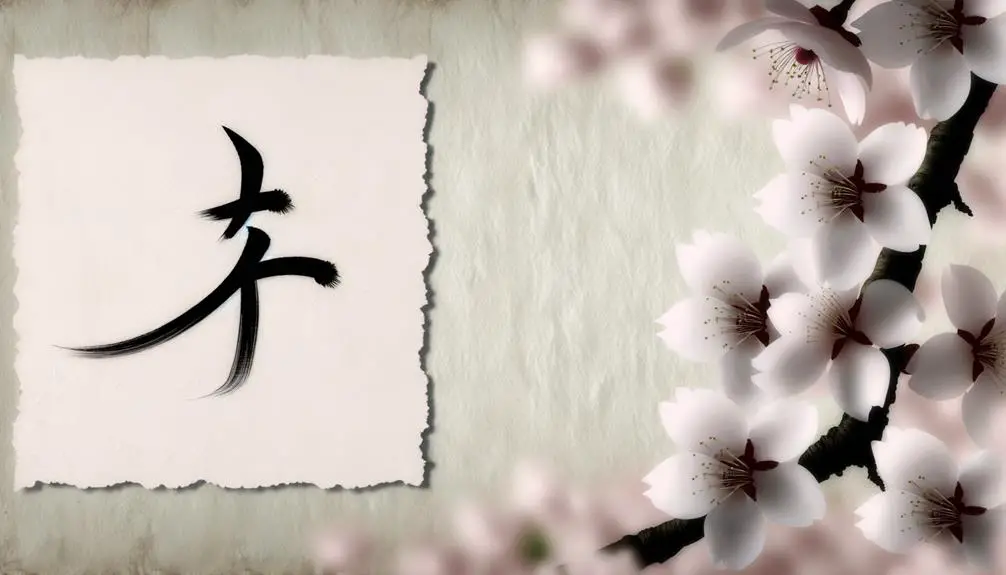
Key Takeaways
- The Japanese kanji for beautiful is 美, pronounced 'bi'.
- The kanji 美 combines radicals meaning 'sheep' (top) and 'big/great' (bottom).
- It consists of 9 strokes, with a specific stroke order for balance and symmetry.
- In calligraphy, 美 emphasizes fluidity, grace, and aesthetic value.
- Often used in names, branding, and art to convey beauty and refinement.
Historical Background
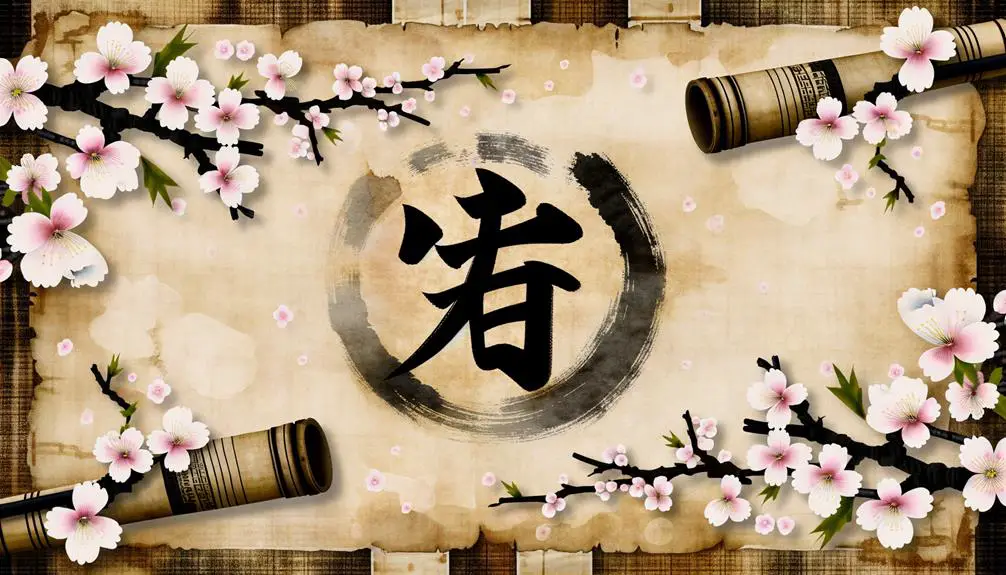
Throughout the centuries, the Japanese character for 'beautiful' (美, pronounced 'bi') has undergone significant evolution, reflecting both linguistic shifts and cultural developments.
Originating from ancient Chinese script, where it initially depicted a person adorned with a headdress, the character was assimilated into the Japanese writing system during the early adoption of kanji.
Over time, 'bi' not only retained its aesthetic connotations but also expanded to embody broader cultural ideals of beauty in Japan. This transformation mirrored Japan's own societal changes, from the Heian period's classical elegance to contemporary interpretations of beauty.
The character's enduring presence in literature, art, and daily language underscores its deep-seated resonance within Japanese culture, illustrating a rich tapestry of historical influences and aesthetic values.
Kanji Composition
The kanji for 'beautiful' (美) is composed of intricate elements and strokes that reflect its aesthetic essence.
Tracing its historical evolution reveals how its form and meaning have been meticulously crafted over centuries.
Moreover, its application in calligraphy underscores the significance of each stroke in conveying beauty and elegance within Japanese culture.
Elements and Strokes
In understanding the kanji for 'beautiful' (美), it is essential to analyze its composition, which includes specific elements and strokes that convey its meaning. The kanji 美 consists of 9 strokes and can be broken down into recognizable components that contribute to its overall significance.
- Top Radical (⺍): This element resembles the kanji for 'sheep' (羊), symbolizing beauty and grace.
- Bottom Radical (大): This part means 'big' or 'great,' enhancing the notion of grandeur in beauty.
- Stroke Order: The strokes must follow a specific sequence to maintain proper form and balance.
- Balance and Symmetry: The composition emphasizes a harmonious structure, reflecting the aesthetic value of beauty.
Understanding these elements aids in appreciating the depth and elegance embedded within the character.
Historical Evolution
Tracing the historical evolution of the kanji for 'beautiful' (美) reveals a fascinating journey of transformation and refinement in its composition. Originating from ancient Chinese scripts, the character evolved through several significant stages, from its inception in oracle bone inscriptions to its current standardized form.
Initially, the character combined elements symbolizing a sheep and a person, connoting beauty and elegance. Over centuries, these pictographic elements underwent stylization, adopting a more abstract, yet streamlined appearance. The kanji's development reflects both aesthetic considerations and practical needs for ease of writing and clarity.
This historical progression underscores the dynamic nature of kanji, where form and function harmoniously evolve, embodying both cultural heritage and linguistic precision.
Usage in Calligraphy
Mastering the kanji for 'beautiful' (美) in calligraphy involves a delicate balance of form, flow, and expressive nuance. This kanji is composed of 9 strokes, each requiring precision to capture its essence.
The art of calligraphy in Japan is not merely about writing but conveying deeper aesthetic values. Practitioners often focus on key elements to achieve this:
- Stroke Order and Structure: Correct sequence guarantees the kanji retains its intended form.
- Brush Pressure: Varying pressure adds depth and character to each stroke.
- Flow and Rhythm: Smooth shifts between strokes convey fluidity and grace.
- Expressive Intent: Each stroke should reflect the calligrapher's emotional and artistic intent.
In mastering these elements, one can truly encapsulate the beauty inherent in the kanji 美.
Pronunciation Guide
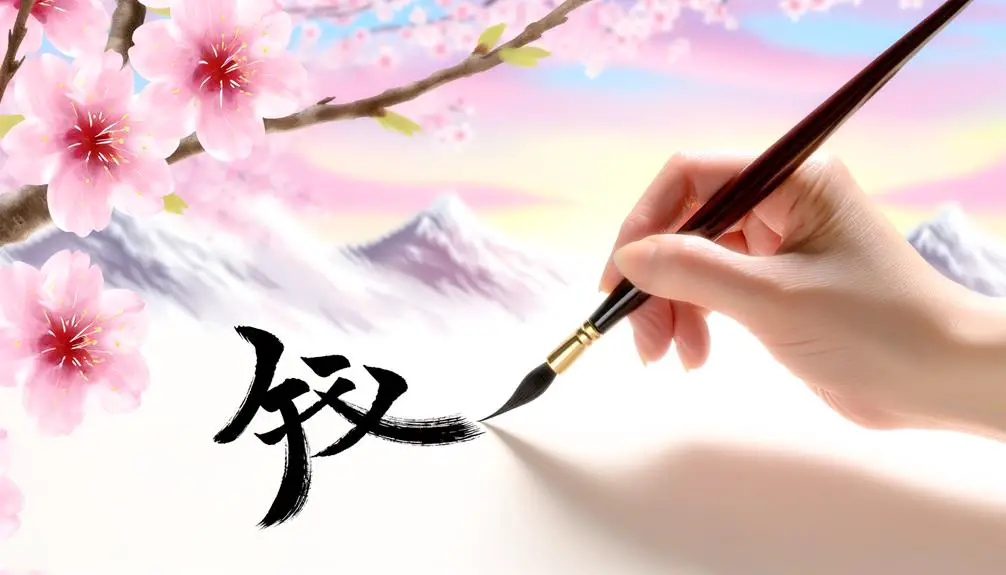
Understanding the correct pronunciation of the Japanese symbol for beautiful, 美 (bi), is crucial for clear communication.
This section will provide basic pronunciation tips, highlight common mistakes to avoid, and offer practical examples to enhance your learning.
Basic Pronunciation Tips
Pronunciation of Japanese characters, such as the one for 'beautiful' (美しい, utsukushii), involves understanding the distinct sounds of each syllable.
Japanese is a syllable-timed language, meaning each syllable is pronounced with equal duration and emphasis.
Here are some basic pronunciation tips to aid in mastering the sound of 美しい:
- Breakdown: Pronounce 'u' separately, then 'tsu', followed by 'ku', and finally 'shii'. Each syllable is distinct.
- Vowel Sounds: Japanese vowels are consistent. 'U' is pronounced like the 'oo' in 'food', and 'i' like the 'ee' in 'see'.
- Consonants: Consonants such as 'tsu' and 'sh' are softer than in English.
- Intonation: Japanese is relatively flat; avoid the pitch variations common in English.
Understanding these elements can enhance your pronunciation accuracy.
Common Mistakes Avoided
Despite mastering basic pronunciation tips, learners often encounter common mistakes that can hinder their ability to articulate Japanese words accurately. One prevalent error is the mispronunciation of long and short vowels.
For instance, the word 'bi' (美, meaning 'beautiful') should not be elongated to 'bii.'
Another issue is the incorrect intonation, as Japanese is a pitch-accent language. Misplacing the stress can alter the word's meaning.
Additionally, learners frequently struggle with the 'r' sound, which is softer and more like a combination of 'r' and 'l' in English.
Practice With Examples
Engage with practical examples to refine your pronunciation of Japanese words, starting with the correct articulation of 'bi' (美, meaning 'beautiful').
Mastery of pronunciation is essential for understanding and being understood in Japanese. Here are some tips and examples to guide your practice:
- Listen and Repeat: Utilize audio resources or language apps to hear native speakers pronounce 'bi' and other related words.
- Phonetic Breakdown: Practice saying 'bi' slowly, focusing on the soft 'b' sound, followed by a short, crisp 'i'.
- Contextual Usage: Incorporate 'bi' into commonly used phrases like 美しい (utsukushii, beautiful) to enhance fluency.
- Consistent Practice: Dedicate time daily to practicing pronunciation, ensuring gradual improvement over time.
Cultural Significance
In Japanese culture, the symbol for beautiful, 美 (bi), holds profound significance, embodying aesthetic principles that transcend mere physical appearance to encompass elegance, harmony, and inner grace. This symbol permeates various aspects of Japanese life, from traditional arts to daily expressions, reflecting a deep appreciation for beauty in all forms. The concept of 美 is interwoven with cultural values such as simplicity, balance, and naturalness, which are essential in Japanese aesthetics.
| Aspect | Description | Example |
|---|---|---|
| Aesthetics | Elegance, simplicity, harmony | Ikebana (flower arranging) |
| Social Interaction | Grace, politeness, refinement | Keigo (polite speech) |
| Traditional Arts | Beauty, craftsmanship, detail | Kimono design |
Understanding 美 enriches one's comprehension of Japanese culture and its intrinsic connection to beauty.
Artistic Representations
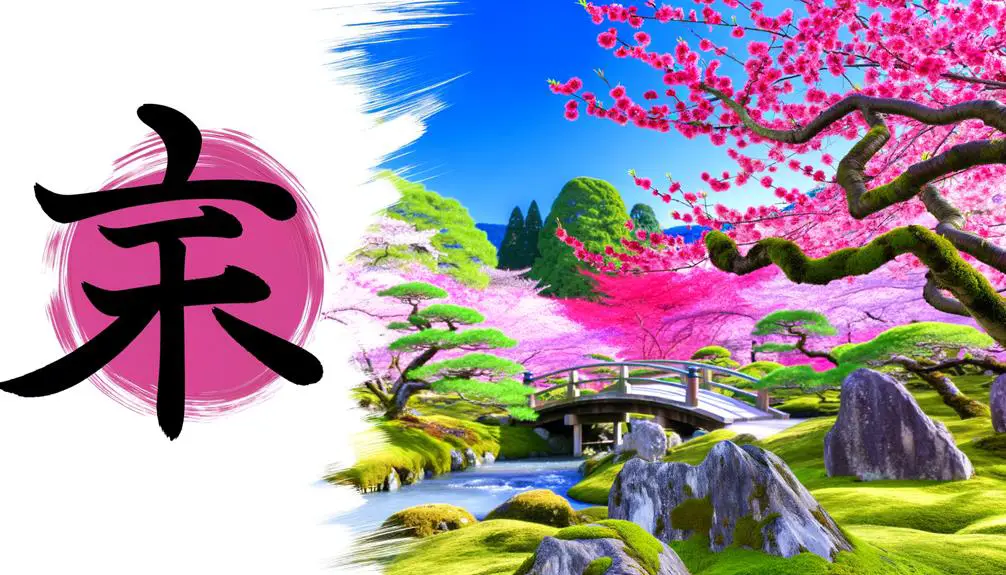
Artistic representations of the symbol 美 (bi) in Japanese culture manifest through various mediums, each highlighting its profound aesthetic and philosophical significance. This kanji, embodying the essence of beauty, is celebrated in traditional and contemporary art forms, reflecting Japan's deep cultural appreciation for elegance and harmony.
- Calligraphy: Masterpieces of shodo (Japanese calligraphy) often feature 美, emphasizing the fluidity and grace of each stroke.
- Textiles: Kimono and obi designs frequently incorporate the kanji, symbolizing beauty in fashion.
- Ceramics: Pottery and porcelain items are adorned with 美 to signify the craftsmanship's beauty and perfection.
- Gardens: Japanese gardens are meticulously designed to embody 美, creating spaces of serene beauty and balance.
These artistic expressions collectively underscore the enduring reverence for beauty in Japanese cultural heritage.
Modern Usage
Building on these traditional artistic expressions, the symbol 美 (bi) continues to find relevance in modern Japanese society, permeating various facets of daily life and contemporary culture.
It is prevalent in branding, where companies utilize 美 to convey elegance and superior quality in products ranging from cosmetics to culinary arts.
Additionally, 美 is a common component in names, both personal and commercial, symbolizing a connection to beauty and refinement.
The symbol also appears frequently in contemporary literature, art, and digital media, serving as a bridge between classical aesthetics and modern sensibilities.
Its enduring presence underscores a societal appreciation for beauty, seamlessly integrating traditional values with current trends and innovations.
Symbolism in Nature

Rooted deeply in the natural world, the symbol 美 (bi) embodies the inherent beauty found in Japan's diverse landscapes and seasonal changes. This kanji encapsulates the Japanese aesthetic appreciation for nature, from the blooming of cherry blossoms in spring to the serene snowfall in winter. The concept of beauty in Japan is intrinsically linked to nature's transient and ever-changing qualities.
- Cherry Blossoms (Sakura): Symbolize the fleeting nature of beauty and life.
- Mount Fuji: Represents enduring beauty and spiritual significance.
- Autumn Leaves (Koyo): Reflect the vibrant, ephemeral splendor of fall.
- Zen Gardens: Illustrate minimalist beauty inspired by nature's harmony.
These elements underscore how 美 (bi) is not merely a character but a profound reflection of natural elegance.
Calligraphy Styles
From the natural world's inspiration, the kanji 美 (bi) finds its elegant expression in various calligraphy styles that highlight its aesthetic essence. Calligraphy, known as shodō, allows for diverse interpretations, each capturing a unique facet of beauty.
| Style | Characteristics | Emotional Impact |
|---|---|---|
| Kaisho | Structured and clear | Composure and clarity |
| Gyōsho | Semi-cursive, fluid | Harmony and balance |
| Sōsho | Cursive, abstract | Freedom and spontaneity |
| Reisho | Simplified, ancient | Timelessness and depth |
Each style offers a different visual and emotional experience, reflecting the multifaceted nature of beauty. The choice of calligraphy style not only influences the aesthetic appeal but also conveys deeper emotional resonance, making the kanji 美 a versatile symbol in artistic expression.
Tattoo Inspirations
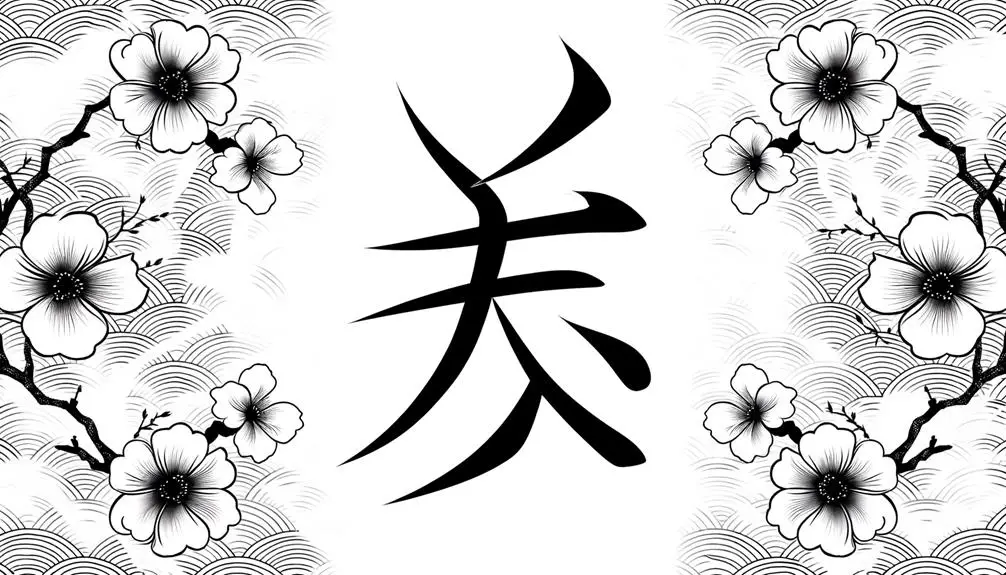
Tattoo enthusiasts often seek kanji designs for their beauty and profound meanings, with '美' (bi) being a popular choice.
The placement of this symbol can notably affect its aesthetic and personal resonance, whether it adorns a wrist, back, or shoulder.
Understanding its cultural significance enhances the appreciation and authenticity of incorporating this elegant character into one's body art.
Popular Kanji Designs
Why do kanji designs, particularly the character for 'beautiful' (美), captivate those seeking meaningful and aesthetically pleasing tattoos? The allure lies in their profound cultural significance, elegant simplicity, and the depth of meaning encapsulated in a single character. The kanji for 'beautiful' is not merely a word but a symbol that conveys an ideal of aesthetics revered in Japanese culture.
- Cultural Significance: Each kanji carries centuries of history and tradition.
- Aesthetic Appeal: The intricate strokes create a visually stunning design.
- Simplicity: A single character can express a complex idea succinctly.
- Personal Meaning: Tattoos often reflect personal values or aspirations.
These elements make kanji designs enduringly popular, symbolizing beauty both in form and meaning.
Meaningful Placement Ideas
When considering a tattoo of the kanji for 'beautiful' (美), selecting a meaningful placement on the body can enhance its personal significance and aesthetic impact. Thoughtful placement can transform a simple symbol into a profound statement of individuality and beauty. Below is a table showcasing various placement ideas, along with their potential meanings and visual impacts:
| Body Part | Meaning | Visual Impact |
|---|---|---|
| Wrist | Constant reminder | Subtle and elegant |
| Nape | Hidden beauty | Intimate and mysterious |
| Shoulder | Strength and grace | Balanced and striking |
| Ankle | Journey and movement | Delicate and dynamic |
| Ribcage | Inner beauty | Contoured and personal |
Thoughtful consideration of placement guarantees the kanji remains a cherished emblem of beauty.
Cultural Significance Explained
Understanding the cultural significance of the kanji for 'beautiful' (美) can provide profound inspiration for those considering it as a tattoo.
This character embodies more than mere aesthetics; it reflects a deep-seated appreciation for harmony, grace, and inner beauty within Japanese culture.
The kanji 美 is often associated with various art forms, from calligraphy to traditional tea ceremonies, symbolizing an intrinsic connection to cultural artistry.
Here are some key inspirations:
- Artistic Expression: Incorporates elegance and refinement.
- Cultural Heritage: Connects to historical and traditional values.
- Personal Growth: Represents inner beauty and self-improvement.
- Spiritual Meaning: Embodies the concept of beauty in mind, body, and spirit.
Choosing 美 as a tattoo can therefore be a meaningful and culturally enriched decision.
Fashion and Design
In the world of fashion and design, the Japanese symbol for 'beautiful' (美, pronounced 'bi') is not only a tribute to aesthetic elegance but also a profound cultural emblem that influences design philosophies worldwide. Designers often integrate this character into their creations, infusing them with a sense of refined beauty. The symbol transcends mere ornamentation, informing the ethos of minimalist and harmonious design prevalent in Japanese aesthetics. Below is a table illustrating its applications:
| Application | Description |
|---|---|
| Fashion Apparel | Embellishments on kimonos and modern garments |
| Accessories | Jewelry, handbags, and footwear designs |
| Interior Design | Wall art, furniture engravings |
| Graphic Design | Logos, branding, and packaging |
| Textile Patterns | Traditional and contemporary fabric prints |
These integrations underscore the timeless essence of 'beautiful' in Japanese style.
Literature References
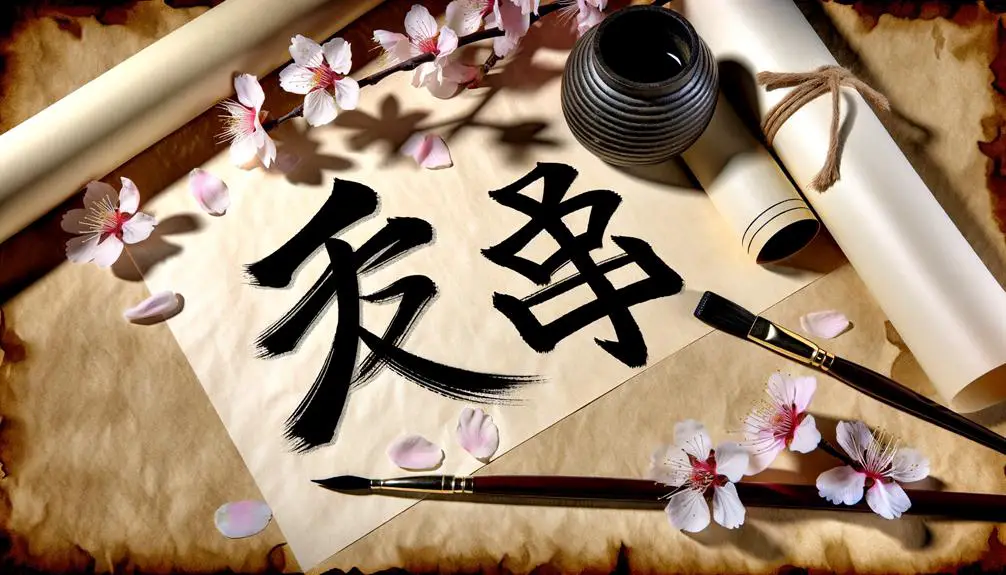
Drawing from classical and contemporary works, the Japanese symbol for 'beautiful' (美, pronounced 'bi') frequently appears in literature, embodying deeper themes of aesthetic and philosophical significance. Authors utilize 美 to convey not only physical beauty but also the essence of purity, harmony, and the fleeting nature of existence. This kanji is deeply interwoven with Japanese concepts such as wabi-sabi and mono no aware, reflecting an appreciation for the transient beauty of imperfection and the poignancy of ephemeral moments.
- Classical Poetry: Beauty is often celebrated in haiku and tanka, emphasizing nature's ephemeral charm.
- Modern Novels: 美 is used to explore characters' inner and outer beauty.
- Philosophical Texts: Examines the moral and ethical dimensions of beauty.
- Cultural Essays: Discusses beauty's role in societal values and artistic expression.
Common Misinterpretations
Despite its profound cultural significance, the Japanese symbol for 'beautiful' (美) is often subject to various misinterpretations both within Japan and internationally.
A common misconception is conflating 美 with solely physical attractiveness, whereas its usage in Japanese culture encompasses a broader aesthetic, including moral and spiritual beauty.
Another frequent error occurs in translation, where 美 is sometimes inaccurately rendered as 'good' or 'nice,' diluting its rich connotations.
Additionally, non-native speakers might misapply the character in contexts where it seems out of place, leading to awkward or incorrect expressions.
To fully appreciate 美, one must understand its deep-rooted cultural and linguistic nuances, transcending superficial interpretations and embracing its inclusive essence.
Conclusion
In sum, the kanji symbol for 'beautiful' in Japanese—美 (bi)—carries profound historical, cultural, and artistic significance.
From ancient texts to modern fashion, its multifaceted applications weave a rich tapestry of meaning.
Misinterpretations can arise, yet the symbol's enduring elegance remains undiminished.
As varied as the strokes that compose it, 美 reflects a timeless allure, illustrating that beauty, indeed, is in the eye of the beholder.


